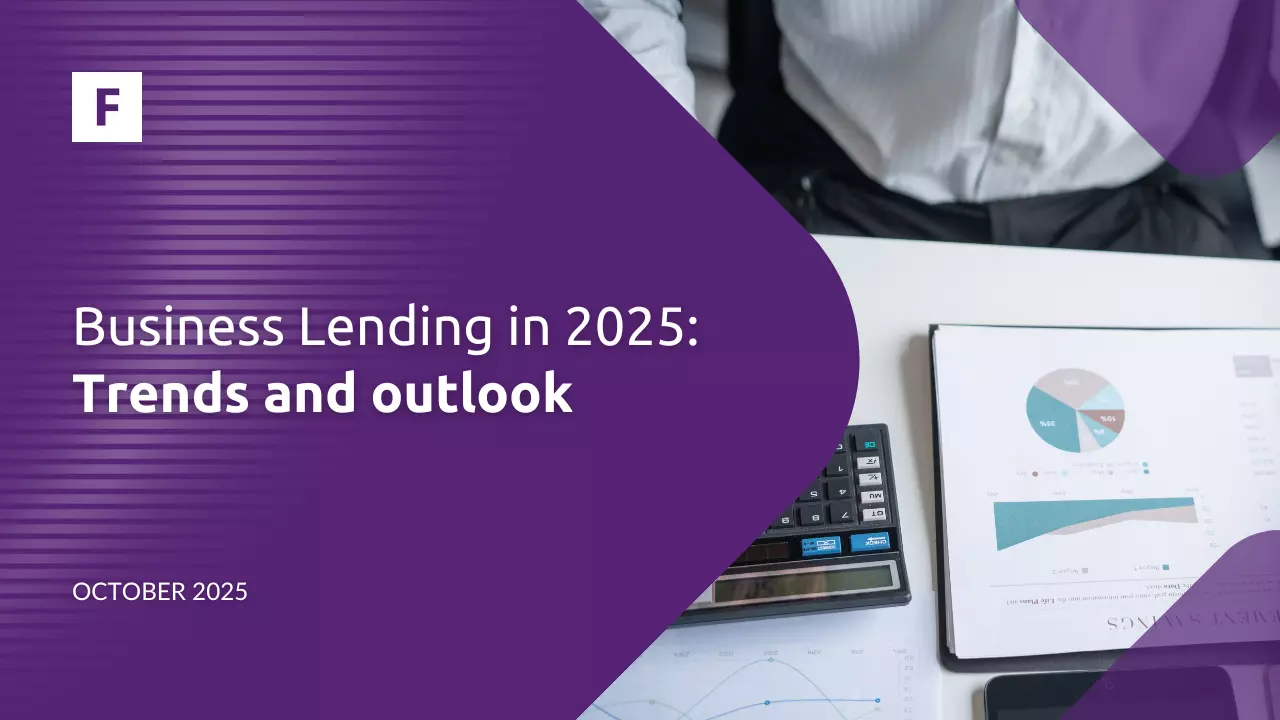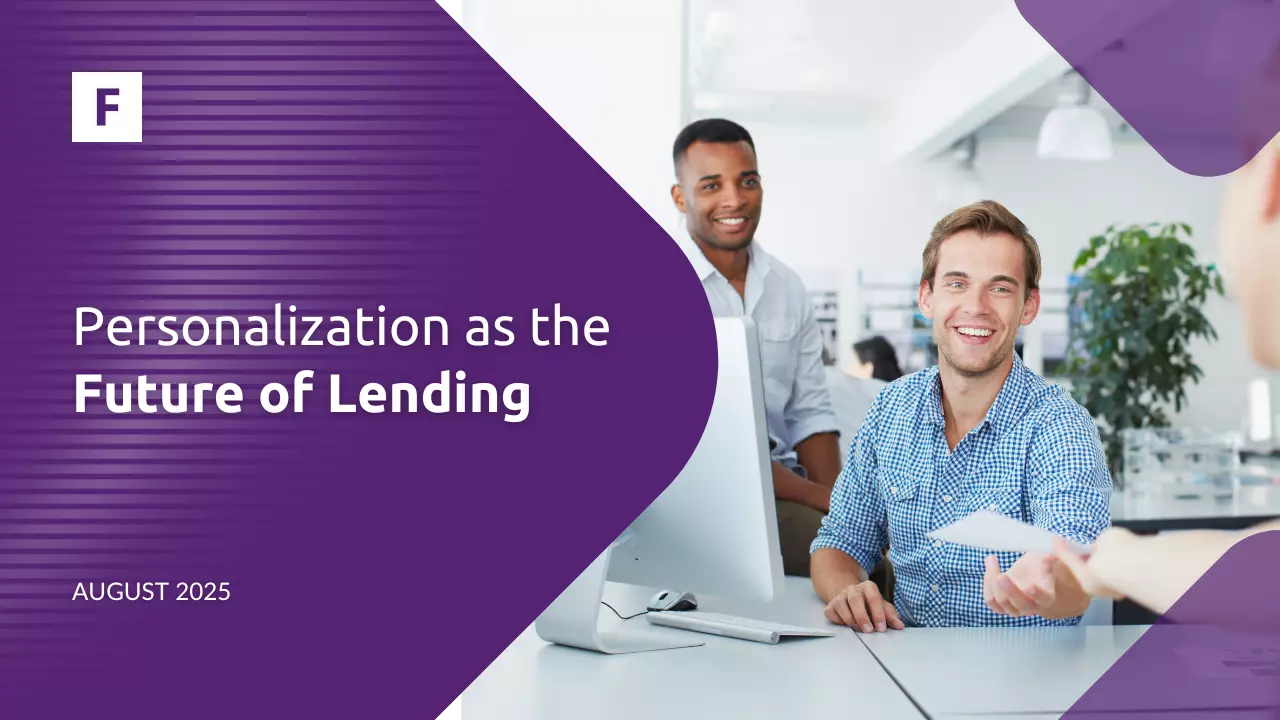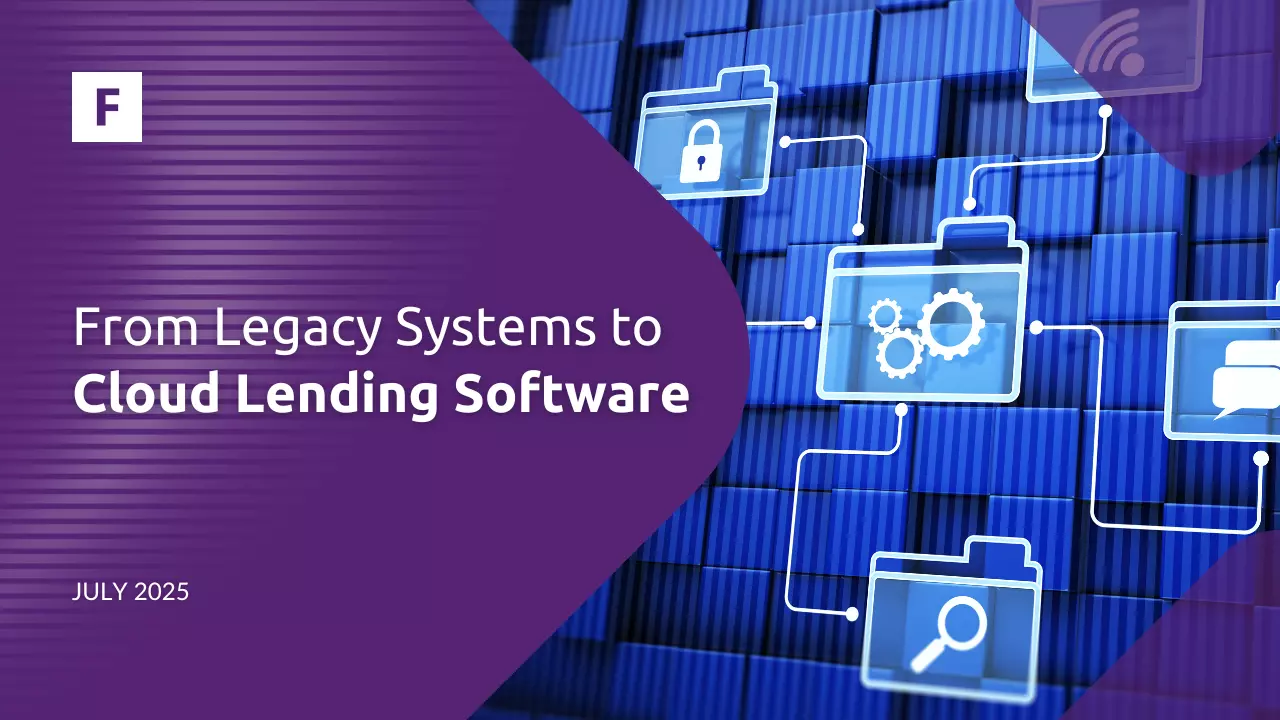Co oznacza ryzyko kredytowe?
Ryzyko kredytowe odnosi się do możliwości poniesienia straty finansowej. Powszechne w sektorze kredytów hipotecznych, kart kredytowych i pożyczek, ryzyko kredytowe obejmuje scenariusze, w których pożyczkobiorcy mogą nie spłacić, w tym niezapłacone rachunki lub emitenci obligacji. Podobnie jest w przypadku, gdy klienci nie regulują zakupów kredytowych lub firmy ubezpieczeniowe nie uznają roszczeń. Aby przeciwdziałać ryzyku kredytowemu, pożyczkodawcy mogą alokować nadwyżki przepływów pieniężnych w celu zapewnienia dodatkowej ochrony. Ponadto, w obliczu zwiększonego ryzyka kredytowego, kredytodawcy mogą dostosować się poprzez podniesienie stóp procentowych, zwiększając w ten sposób przepływy pieniężne w celu złagodzenia potencjalnych strat.
Są to główne kluczowe punkty tego artykułu:
Zrozumienie ryzyka kredytowego.
Otwarta bankowość i pożyczki.
Trendy w sektorze otwartej bankowości.
Innowacyjne rozwiązania.
Dlaczego zarządzanie ryzykiem jest ważne?
Zarządzanie ryzykiem kredytowym jest niezbędne dla pożyczkodawców i banków zajmujących się udzielaniem pożyczek. Muszą oni uwzględniać różne czynniki, które mogą zwiększać ryzyko, takie jak niewiarygodni pożyczkobiorcy, oszustwa i czynniki ekonomiczne. Nawet pojedyncze niewykonanie zobowiązania może prowadzić do strat. Dlatego też ocena zdolności kredytowej kredytobiorcy i wdrożenie procesów zarządzania ryzykiem kredytowym mają kluczowe znaczenie dla ograniczenia tego ryzyka.
Jak banki oceniają ratingi kredytowe?
Ocena zdolności kredytowej klienta obejmuje uwzględnienie pięciu C kredytu: charakteru, zdolności, kapitału, zabezpieczenia i warunków. Charakter odzwierciedla wiarygodność kredytobiorcy, często ocenianą na podstawie historii kredytowej i reputacji. Kapitał reprezentuje inwestycje finansowe w biznes, wykazując zaangażowanie i zapewniając bufor na wypadek wyzwań finansowych. Zdolność ocenia zdolność kredytobiorcy do spłaty zadłużenia, biorąc pod uwagę przepływy pieniężne i dochody. Zabezpieczenie służy jako zabezpieczenie kredytu, w tym aktywa zastawione w celu pokrycia kredytu w przypadku niewywiązania się ze zobowiązań. Warunki obejmują czynniki zewnętrzne, które wpływają na zdolność kredytobiorcy do spłaty, takie jak trendy gospodarcze i warunki branżowe. Analiza tych czynników pomaga firmom podejmować świadome decyzje kredytowe przy jednoczesnym skutecznym zarządzaniu ryzykiem. Znane agencje referencyjne w Wielkiej Brytanii to TransUnion, Experian i Equifax.
Czasami sprawdzenie przeszłości klienta może rodzić pytania o to, jak ocenić zdolność kredytową firmy przy ograniczonych danych. Niektóre z pytań, które należy zadać referencjom handlowym podczas sprawdzania zdolności kredytowej firmy, to: kiedy ostatnio wystąpiły opóźnienia w płatnościach? Czy są one częste? Jaka jest największa kwota kredytu, z którego korzystał klient? Ile klient jest obecnie winien? Czy są jakieś zaległe raty? Jakie są warunki Państwa oferty kredytowej dla klienta? Jakie jest Państwa ogólne wrażenie na jego temat? Czy przedłużyliby Państwo ponownie kredyt lub rozważyli zwiększenie limitu kredytowego? Przestrzeganie tych wskazówek zmniejsza potencjalne ryzyko dla klientów.
Istnieją jednak inne czynniki, które wpływają na ocenę kredytową](https://time.com/personal-finance/article/what-affects-your-credit-scores/). Zestaw kredytów również odgrywa rolę w kształtowaniu oceny kredytowej, ponieważ odzwierciedla różnorodność rodzajów kredytów w portfelu finansowym. Utrzymanie zdrowej mieszanki kredytów ratalnych i odnawialnych świadczy o zdolności do odpowiedzialnego zarządzania różnymi rodzajami kredytów. Zakres nowych wniosków kredytowych może wpływać na punktację kredytową, choć w mniejszym stopniu niż inne czynniki. Ubieganie się o kilka linii kredytowych w krótkim czasie może być oznaką trudności finansowych i może prowadzić do obniżenia oceny kredytowej. Zaleca się rozłożenie wniosków kredytowych w czasie, aby złagodzić ich negatywny wpływ na ocenę punktową.
Salda na kartach kredytowych są brane pod uwagę przez niektóre modele scoringu kredytowego, takie jak VantageScore. Wysokie salda, nawet jeśli płatności są dokonywane terminowo, mogą negatywnie wpłynąć na Państwa ocenę kredytową. Zaleca się, aby salda na kartach kredytowych były spłacane w całości każdego miesiąca, aby utrzymać zdrowy profil kredytowy.
Wreszcie, posiadanie zbyt wielu rachunków kart kredytowych może mieć wpływ na ocenę kredytową, choć w mniejszym stopniu. Na przykład, jeśli pożyczkobiorca posiada trzy karty kredytowe z łącznym limitem kredytowym w wysokości 30 000 USD i obecnie ma łączne saldo w wysokości 10 000 USD, jego potencjalne zadłużenie wynosi 20 000 USD. Instytucje finansowe biorą to pod uwagę przy obliczaniu ryzyka kredytowego. Chociaż FICO nie bierze tego czynnika bezpośrednio pod uwagę, VantageScore przypisuje mu pewną wagę.
Możliwe jest poprawienie wyników kredytowych poprzez współpracę z firmami zajmującymi się naprawą kredytów. Według Investopedia, najlepsze z tych firm to The Credit People, Credit Saint, Sky Blue Credit i CreditFirm.net. Firmy zajmujące się naprawą kredytów współpracują z wierzycielami i biurami kredytowymi w celu usunięcia wątpliwych pozycji z raportów kredytowych i poprawy wyników kredytowych. Chociaż samodzielna naprawa jest opcją, współpraca z renomowaną usługą naprawy kredytowej może zaoszczędzić czas i przynieść lepsze wyniki, szczególnie dla osób o złożonej sytuacji finansowej.
Jak dokładnie obliczane jest ryzyko kredytowe firmy?
Ocena ryzyka kredytowego obejmuje kilka wskaźników, przy czym powszechną metodą jest obliczanie prawdopodobieństwa niewypłacalności. Jedna z kluczowych miar, wskaźnik niewypłacalności, odzwierciedla odsetek pożyczek, które nie zostały w pełni spłacone w terminie, przy czym wyższy wskaźnik wskazuje na wyższe ryzyko. Inna miara, wskaźnik dotkliwości strat (LSI), mierzy finansowy wpływ niewykonania zobowiązania na instytucję, w zakresie od 0 (brak wpływu) do 100 (pełny wpływ), przy czym wyższy wskaźnik LSI wskazuje na większą dotkliwość. Dodatkowe miary obejmują stratę z tytułu niewykonania zobowiązania (LGD), która wskazuje potencjalne straty, jeśli wszystkie pożyczki nie zostaną spłacone jednocześnie, oraz całkowity wskaźnik strat (TLI), który mierzy straty, jeśli niewykonanie zobowiązania wystąpi w określonym okresie. Wskaźniki te łącznie informują instytucje o potencjalnym ryzyku finansowym związanym z działalnością kredytową.
Po obliczeniu i zmierzeniu danych niezbędna jest ich analiza. Modele analizy ryzyka](https://corporatefinanceinstitute.com/resources/commercial-lending/credit-risk-analysis/) pomagają oszacować oczekiwane straty za pomocą takich miar, jak prawdopodobieństwo niewykonania zobowiązania (PD), strata z tytułu niewykonania zobowiązania (LGD) i ekspozycja na niewykonanie zobowiązania (EAD). Wyniki analizy ryzyka kredytowego informują o decyzjach dotyczących warunków kredytowych i wyjątkowych zatwierdzeń, w celu zrównoważenia ryzyka i optymalizacji ogólnego zarządzania ryzykiem portfela. Celem jest skuteczne ograniczenie ryzyka kredytowego przy jednoczesnej maksymalizacji akceptowalnych poziomów ryzyka dla firmy.
Innym źródłem danych do oceny ryzyka kredytowego są wyciągi bankowe. Analiza wyciągów bankowych](https://www.docsumo.com/blog/bank-statement-analysis) obejmuje przegląd wpływów i wypływów pieniężnych z rachunków w celu oceny kondycji finansowej osób fizycznych. Biorąc pod uwagę oprogramowanie do analizy wyciągów bankowych, należy priorytetowo traktować takie funkcje, jak możliwość dostosowania do różnych formatów dokumentów, dokładność ekstrakcji danych i wykrywania oszustw, możliwości walidacji między źródłami oraz funkcje przeglądu i oznaczania anomalii. Takie oprogramowanie pomaga instytucjom finansowym usprawnić decyzje kredytowe, poprawić wydajność i obniżyć koszty poprzez minimalizację błędów i nadmiarowości.
W krajach bałtyckich zalecamy Państwu korzystanie z usługi informacji o rachunku oferowanej przez Creditinfo i KIB. Usługa oferuje łączność z głównymi bankami bałtyckimi, przyjazny dla użytkownika interfejs dla osób fizycznych i firm, kategoryzację danych i integrację z aplikacjami odbiorcy. Creditinfo zapewnia również raport PSD2 z kluczowymi wskaźnikami pochodzącymi z informacji o koncie, w tym wskaźnikami, wskaźnikami i wskaźnikami predykcyjnymi. Odbiorca odnosi największe korzyści, gdy scoring ryzyka kredytowego Creditinfo jest zintegrowany z jego procesami, łącząc dane biura z informacjami o koncie w celu kompleksowej oceny ryzyka.
Jak wygląda branża otwartej bankowości?
Open Banking Data](https://www.linkedin.com/pulse/evolving-credit-scoring-harnessing-power-open-banking-data-uecte/) zapewnia znaczące korzyści dla kredytodawców. Oferuje dokładność w czasie rzeczywistym, zapewniając im aktualne i dokładne migawki finansowe. W przeciwieństwie do tradycyjnych czynników oceny zdolności kredytowej, takich jak dane demograficzne, dane te zapewniają bardziej aktualny i kompletny obraz tego, jak osoby fizyczne i małe firmy zarządzają swoimi pieniędzmi. Możliwości analizy długoterminowej pozwalają na kompleksową ocenę ryzyka obejmującą okres do 48 miesięcy.
Otwarta bankowość sprawia, że udzielanie pożyczek staje się wygodniejsze. Umożliwia natychmiastowe sprawdzenie zdolności kredytowej poprzez bezpieczny dostęp do danych konta bankowego w czasie rzeczywistym, dając pożyczkodawcom natychmiastową weryfikację dochodów. Otwarta bankowość umożliwia pożyczkodawcom zmniejszenie zaległości w spłacie pożyczek poprzez zapewnienie pożyczkobiorcom narzędzi do zarządzania budżetem. Integracja bezpiecznych rozwiązań płatniczych między kontami usprawnia rozliczanie pożyczek, upraszczając transakcje w aplikacjach i poprawiając ogólne wrażenia pożyczkobiorcy. Ponadto Open Banking usprawnia cały proces udzielania pożyczek, zastępując ręczne, papierowe procedury ofertami cyfrowymi. Ta cyfryzacja zwiększa wydajność i wygodę klientów, prowadząc do płynniejszego ogólnego doświadczenia kredytowego.
Trendy związane z otwartą bankowością](https://britepayments.com/resources/article/open-banking-trends-2024/) przekształcają branżę usług finansowych, a Europa przoduje w ich wdrażaniu, przy czym oczekuje się, że do 2024 r. liczba użytkowników osiągnie 132,2 mln. Chociaż koncepcja ta jest wciąż stosunkowo nowa, szybko zyskuje na popularności na całym świecie dzięki obecnym trendom. Niektóre trendy obejmują zwiększone bezpieczeństwo cybernetyczne i ulepszenia sztucznej inteligencji. Oszustwa finansowe budzą coraz większe obawy na całym świecie, co prowadzi do zwiększonego zapotrzebowania na lepsze rozwiązania w zakresie cyberbezpieczeństwa w usługach finansowych. Otwarta bankowość zapewnia szybką reakcję, oferując natychmiastowe płatności między kontami w celu zminimalizowania ryzyka oszustwa. W 2024 roku otwarta bankowość będzie nadal wykorzystywać technologię sztucznej inteligencji. Dzięki bezpiecznemu dostępowi do danych transakcyjnych, zewnętrzni dostawcy mogą oferować spersonalizowane rekomendacje w celu poprawy dobrobytu finansowego. Aby uzyskać bardziej szczegółowe informacje, mogą Państwo pobrać Brite Open Banking Explainer. Do wyróżnionych dostawców danych otwartej bankowości należą nasi partnerzy AperiData i GoCardless. Proszę dowiedzieć się więcej o naszych partnerach oferujących usługi takie jak systemy pożyczek online i wiele innych tutaj.
Rozwiązanie Fintech Market do zarządzania ryzykiem kredytowym
Nasze oprogramowanie do podejmowania decyzji kredytowych ma wbudowaną optymalną ocenę ryzyka i scoring wniosków, aby pomóc w wykorzystaniu procesu decyzyjnego. Silnik decyzji kredytowych umożliwia tworzenie modeli decyzyjnych przy użyciu informacji wejściowych i równań, z konfigurowalnymi polami danych i opcjami integracji z istniejącymi systemami. Oprogramowanie do podejmowania decyzji kredytowych oferuje elastyczność w konfiguracji pól danych, płynną integrację z głównym systemem i usprawnione scenariusze decyzyjne wspierane przez różne równania, interaktywne przewodniki i funkcje testowania. Proszę dowiedzieć się więcej o innych naszych produktach, takich jak Credit Decision Engine tutaj.
Nasze łatwe w użyciu oprogramowanie do zarządzania ryzykiem kredytowym upraszcza tworzenie i zarządzanie modelami decyzyjnymi i scoringowymi klientów. Dzięki funkcji „przeciągnij i upuść” użytkownicy mogą łatwo modyfikować i układać elementy zgodnie ze swoimi potrzebami, zapewniając elastyczność i wygodę podczas projektowania modelu. Ocenę ryzyka i scoring wniosków ułatwiają etapy procesu decyzyjnego dostosowane do konkretnych wymagań biznesowych. Ponadto funkcje kontroli wersji umożliwiają zachowanie przejrzystej historii modelu, a wskaźniki stanu ułatwiają monitorowanie statusów wersji.
Nasze rozwiązanie zapewnia kompleksowy widok i wizualizację zapytań dotyczących modelu ryzyka. Użytkownicy mogą korzystać z reprezentacji graficznych, które zapewniają przejrzysty przegląd zapytań za pomocą atrakcyjnych wizualnie grafik. Ponadto aplikacja umożliwia łatwy dostęp do wyników specyficznych dla wersji lub scenariusza, w zależności od potrzeb. Dla każdej aplikacji dostępne są szczegółowe informacje, w tym podsumowanie wyników oraz rozkład decyzji, ocen i wyników. Ponadto użytkownicy mogą porównać alternatywne modele, jeśli używana jest opcja Champion Challenger.
Nasz system pożyczek konsumenckich umożliwia firmom tworzenie alternatywnych produktów finansowych dostosowanych do niedostatecznie obsługiwanych klientów, wspierając integrację finansową i ograniczając profile wysokiego ryzyka. Koncentrując się na zarządzaniu produktami pożyczek konsumenckich, platforma upraszcza proces udzielania pożyczek.
Kluczowe funkcje obejmują dostosowane rozwiązania finansowe, które umożliwiają instytucjom tworzenie niestandardowych produktów dla określonych grup demograficznych, takich jak kobiety-przedsiębiorcy lub społeczności wiejskie. Ta elastyczność pozwala im zaspokajać unikalne potrzeby finansowe i zarządzać różnorodną gamą produktów, w tym niezabezpieczonymi i zabezpieczonymi pożyczkami.
Zalecamy również zapoznanie się z naszym bezpiecznym systemem leasingowym SaaS, który może pomóc Państwu w łatwym zarządzaniu dowolnym systemem pożyczkowym online. Nasz innowacyjny system zarządzania pożyczkami pozwala na stworzenie bezproblemowej obsługi wniosków o kredyt odnawialny dla Państwa klientów, dostosowując produkt do ich unikalnych potrzeb i preferencji. Kluczowe cechy naszego systemu leasingowego SaaS obejmują elastyczne konfiguracje produktów, pozwalające Państwu na tworzenie linii kredytowych z odpowiednimi limitami, oprocentowaniem i warunkami spłaty dostosowanymi do indywidualnych potrzeb finansowych. Ponadto przejrzysta struktura opłat zapewnia jasność i uczciwość, umożliwiając klientom zrozumienie i zróżnicowanie stóp procentowych i opłat dla różnych grup klientów.
Podsumowując, poruszanie się w złożonym krajobrazie zarządzania ryzykiem kredytowym, trendów otwartej bankowości i innowacyjnych rozwiązań finansowych wymaga głębokiego zrozumienia ewoluujących technologii. Ponieważ branża usług finansowych nadal ewoluuje, bycie na bieżąco i umiejętność adaptacji będą kluczem do sukcesu.
*O Fintech Market
*FTM oferuje globalne oprogramowanie pożyczkowe dla instytucji finansowych. Oparta na chmurze platforma oferuje narzędzia CRM, KYC, zarządzania ryzykiem i pożyczkami dla pożyczek, depozytów i inwestycji. Dostosowane do potrzeb rozwiązania umożliwiają neobankom, MŚP, firmom leasingującym samochody i firmom typu „kup teraz, zapłać później”.







